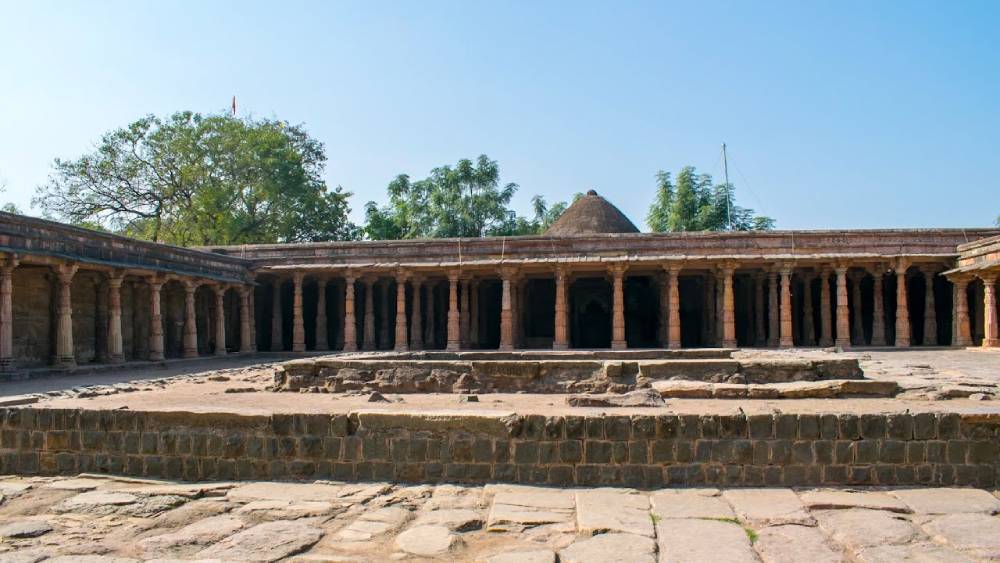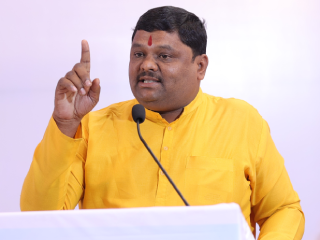
On Monday (15th July), the Archeological Survey of India (ASI) submitted its report on the scientific survey conducted on the Bhojshala complex situated in Dhar, Madhya Pradesh. Additionally, copies of the ASI report have also been sent to the central and state governments. The ASI conducted a scientific survey of the Bhojshala complex on the directions of the Madhya Pradesh High Court as it has been embroiled in a dispute over its religious character. In its report, the ASI stated that the scientific investigation revealed that the existing structure was made from the parts of pre-existing temples and it was modified and converted into a mosque.
In its report, ASI said, “The art and architecture on pillars suggest that they were part of temples.” The ASI noted that the remains are of a pre-existing temple. It also added that mutilated Vishnu sculptures were found during the survey.
The finding mentioned that the three pillars art and architecture suggest that they were part of temples. According to the ASI report, the existing mosque structure was built on a pre-existing structure adding that the stone superstructure was modified and converted into a mosque.
According to the ASI report, the pre-existing structure dates back to the Paramara period. The report said, “Based on the existing inscriptions in the complex it can be said that the inscriptions contained literary works composed by some of the Paramara kings.”
Sanskrit-Prakrit inscriptions older than Arabic found, most inscriptions start with Om Sarasvityanamah, Om Namah Shivay
Further in the report, the ASI has stated that most inscriptions on the complex structure “started with the invocation of gods such as Om Sarasvityanamah, Om Namah Shivay”.
Additionally, it has been mentioned that a large number of large-sized inscriptions in Sanskrit and Prakrit were also found during the scientific survey. The ASI report noted that the Sanskrit inscriptions are older than the Arabic ones.
The report said, “All Sanskrit and Prakrit inscriptions are earlier than the Arabic and Persian inscriptions, indicating that users of engravers of the Sanskrit and Prakrit inscriptions occupied the place earlier.”
Idols, and figurines of Hindu deities found during the survey
Additionally, the report added that the ASI found sculptures of Hindu deities including Lord Ganesha at the complex site. The ASI survey team found mutilated structures of a Vishnu idol and other temple remains. They added that images on the previous structure, including those of Brahma, Ganesh, Narasimha, and Bhairava, were chiselled or defaced and reused in the present structure.
The report stated, “Images carved on these included Ganesha, Brahma with his consorts, Narasimha, Bhairava, other gods and goddesses, human and animal figures. As human and animal figures are not permitted at the mosque, such images have been chiselled out or defaced.”
As per the report, the ASI found a painting of a Trishul. The report added that they found a grey Trishul painting on the right hand of an idol, measuring around 10cm long and 8cm wide.
According to media reports, a total of 94 sculptures, sculptural fragments, and architectural members with sculptural depictions were observed during the investigation. They are composed of basalt, marble, schist, soft stone, sandstone, and limestone. Sculptures of four armed deities were carved on the windows, pillars, and used beams. The images carved on them include Ganesha, Brahma with his wives, Nrisimha, Bhairava, other deities, and human and animal figures.
As per media reports, the images carved on the house included that of the lion, elephant, horse, dog, monkey, snake, tortoise, swan, and other birds. It also includes various types of Kirtimukha human faces, lion faces, and mixed faces in mythological and mixed figures. Notably, human and animal figures are not allowed in mosques so these images have been chiselled or defaced.
This can be seen on the pillars and pilasters in the western and eastern pillars. The entrance to the southeast chamber is on a lintel in the western colonnade. Reportedly, because of this, the Kirtimukhas with human, animal, and mixed faces carved on many pillars in the western pillars were not destroyed. The small figures of deities carved on the frames of the windows on the north and south walls of the western pillar are also in comparatively good condition.
Inscriptions indicate the tradition of the existence of an educational center
Furthermore, the inscriptions on the Bhojshala complex also indicate the tradition of the existence of an educational center.
According to media reports, several fragments found in and around the present structure contain similar text. There are hundreds of verse numbers which indicate that these were long literary works. The two Nagakamika inscriptions in the western pillar, engraved on two different pillars, are of grammatical and educational interest. These two inscriptions point to the tradition of the existence of a center of education.
It is believed to have been founded by Raja Bhoj. The opening verses of an inscription mention King Naravarman, son of Udayaditya of the Paramara dynasty, who ruled between 1094-1133 AD.
The ASI recently found a total of 31 coins of silver, copper, aluminum, and steel which are believed to be more than 1,000 years old. Reportedly, these coins belong to the period of Indo-Sasanian (10th-11th century), Delhi Sultanate (13th-14th century), Malwa Sultan (15th-16th century), and Mughal (15th-16th century) period. These coins were found in the present structure in the Dhar state in the 18th century. The oldest coins found at the site are Indo-Sasanian. These coins may belong to the 10th-11th century.
It is believed that these coins are from the time when Parmar kings were ruling Malwa with their capital at Dhar.
It is important to note that the ASI began a scientific survey on 22nd March this year following the orders of the Madhya Pradesh High Court. Initially, the court had asked the ASI to submit its report on 29th April. However, the ASI submitted an application to seek eight more weeks to submit its report, citing a delay in the process.
Bhojshala complex has been at the centre of a dispute between the Hindu and Muslim communities as the Muslims insist that the Bhojshala complex is Kamal Maula mosque but the Hindus note that it is a temple dedicated to Goddess Vagdevi (Saraswati).
Source : OpIndia





